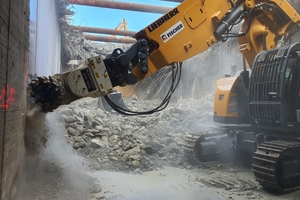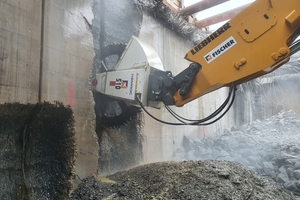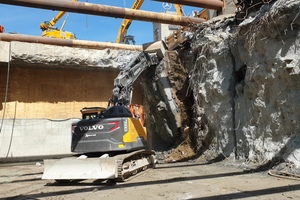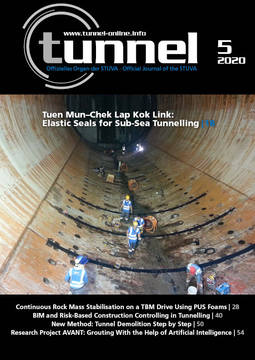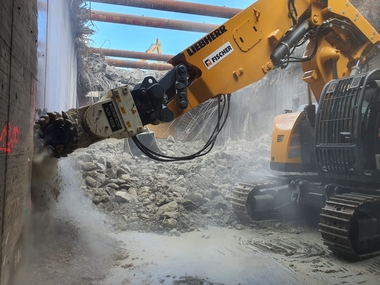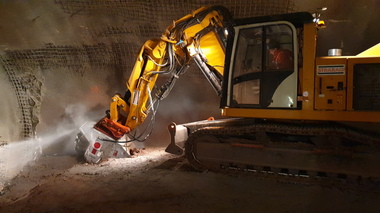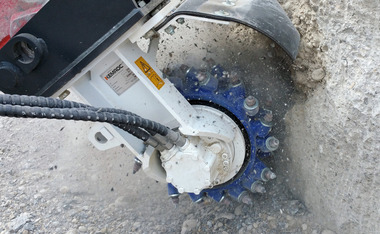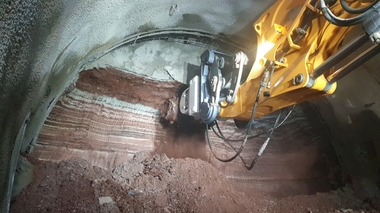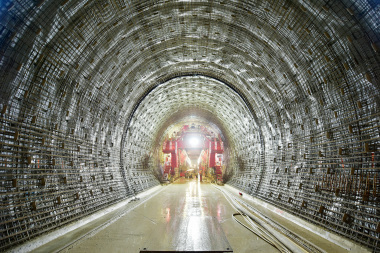Tunnel Demolition Step by Step
Stuttgart, the capital of the German state Baden-Württemberg, is in a constant state of change. As a part of the railway construction project “Stuttgart 21”, numerous tunnels are built and several existing tunnels must be modified; which is the case in Schillerstrasse, where the passageway connecting the new “Staatsgalerie” tram stop and the Klettpassage is being rebuilt. This involves modifying a 120 m stretch of the existing tunnel. Work started in early summer 2020 when the general contractor, Ed. Züblin AG, commissioned Fischer Weilheim GmbH to carry out the work using the standard method. The demolition work started by removing material from the top and the bottom of the tunnel step by step, using a hydraulic excavator with breaker and shearer attachments. Work then progressed to the removal of the 160 cm thick wall lining, which was made more difficult than usual due to the presence of a bituminous sealing layer and brick work between the concrete lining and the soil.
To be able to process and dispose of these materials separately, the contractor Fischer and the Kemroc agent in Baden-Württemberg and Switzerland, Otmar Riester, developed an innovative method of demolishing the tunnel walls in segments. Demolition work was carried out using a rental Liebherr R950 tunnel excavator together with a breaker, shearer and two Kemroc cutting attachments. With these tools, the walls could be divided into 4–6 m wide sections, which were then torn down and processed.
Working Procedure
In the first step, the excavator operator uses a Kemroc KR 165 rotary drum cutter when grinding a 150 cm wide vertical slot into the wall. In this way he narrows it to a thickness of 100 cm. He then uses a Kemroc DMW 220_1000 to cut through the wall in the strip which was ground by the drum cutter. These two steps are then repeated for cutting horizontal slots dividing the tunnel lining into various segments. The next stage is to use a breaker to weaken the segment at the base of the wall before pulling it down using the excavator bucket. The tunnel lining wall falls to the floor. In this position, each layer of soil, bituminous material and brickwork could be removed separately leaving a solid piece of concrete which could be broken down using breaker and shearer for removal from the job site.
Doubled Performance
Two months after the job started in June 2020, almost half of the tunnel lining had been removed. Christoph Fischer, fourth generation partner at Fischer Weilheim, is responsible for equipment and special solutions in the family company. He commented, “After a short time, it was clear that this was the most effective and economical method for the demolition and separation of material in the tunnel lining. We doubled the expected production rate compared to the use of hydraulic hammers since it isn’t so easy to get full productivity from an excavator with breaker in the confined space of a tunnel. Once each segment had been knocked over, it was much easier to break them down using the hydraulic breaker. We could also use several construction machines at the same time.

